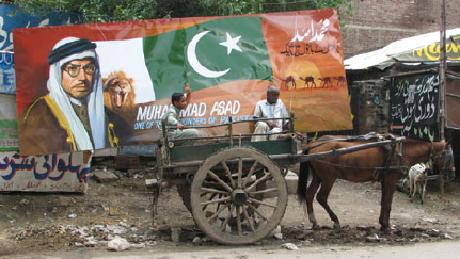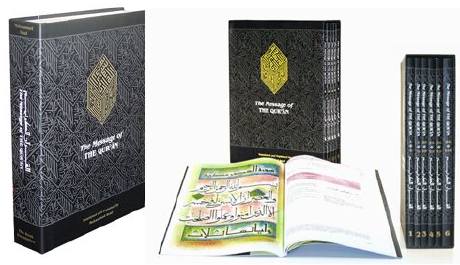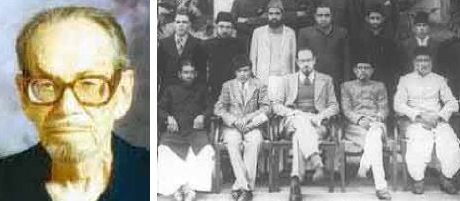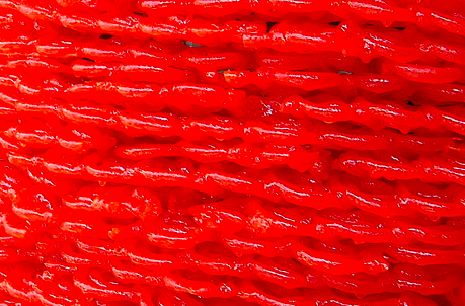
Tuesday, October 27, 2009
Friday, October 16, 2009
Achever
 PakTranslations beta
PakTranslations beta Pakistan's First Machine Translation Portal
Translate ur Required web site or article, Just past link in bar. Great job.
Dr. Pervez Hoodbhoy
Dr. Pervez Hoodbhoy, renowned nuclear physicist and disarmament activist, who teaches at Quaid-e-Azam University in Islamabad, recently visited the University of Illinois at Urbana-Champaign, and delivered a talk, the title of which was: Sacred Terror – Theirs and Ours. I was fortunate enough to find out about this and actually attend the lecture. I will attempt to summarize what Dr. Pervez Hoodbhoy said, since I thought most of our Pakistaniat readers would like to know what he had to say on the extremely divisive subject of global terrorism, which has become extremely important after 9/11.
Dr. Hoodbhoy started the talk by giving the audience a definition of terrorism.
“Terrorism is the deliberate targeting of non-combatants with the intention to kill or wound.”If this, indeed, is the definition of terrorism, then it leads us to re-examine some of the events that took place some time ago, but which have all had an impact on history. While much has been written about Hiroshima and Nagasaki, they have not really ever been referred to as acts of terrorism. In 1971, when the West Pakistani Army slaughtered close to 100,000 Bengalis, Dr. Hoodbhoy thinks that sort of brutality can also be seen as terrorism, but of course as we all know, history has not recognized it as such.
We all remember the Munich Olympics of 1972, when members of the Israeli Olympic team were taken hostage by the Palestinian group “Black September,” a group which had ties to Yasser Arafat’s Fatah organization. By the end of the ordeal, the group had murdered 11 Israeli athletes and one German police officer. Of course, the Palestinians thought they were merely taking their revenge from people who were representatives of the country that had deprived them of their homeland. Dr. Hoodbhoy calls this an act of terrorism as well.
There are numerous other similar incidents in history. Dr. Hoodbhoy, very interestingly, talked about former President Ronald Reagan, who on one occasion was quoted as saying, “I am a Mujahideen” while posing for pictures with Afghan Mujahideen including Gulbadin Hikmatyar Apparently, at that time, President Reagan had also said about the Mujahideen that “they were the moral equivalent of the founding fathers of America.”
So as you can see, terrorism is a very complex subject, and its definition depends, to some extent, on which side you belong to. Yesterday’s freedom fighters have become today’s terrorists. After 9/11, while the US was engulfed by insurmountable grief, one is ashamed to admit that there was jubilation and actual celebration in most of the Muslim world. Whereas one’s initial reaction is to feel appalled at such apathy at the death of innocent people, it is important to point out that the Muslims are not the only “bad guys” in the world. Recently, Dr. Hoodbhoy saw CNN coverage of the bridge collapse in Minnesota where 13 people died and approximately 100 were injured, and while it was very tragic to hear the stories of the survivors and those of the families who had lost loved ones, Dr. Hoodbhoy says he was reminded of the beginning of the Iraq war, where the very same CNN was simply ecstatic at the collapse of a similar bridge. CNN was going on and on about the precision with which the United States attacks its targets, and there was no sorrow at the loss of innocent lives that accompanied this feat.
Terrorism is born and flourishes when the world gets divided into “us” and “them” and this is a mind-set that is rampant in today’s world.
“The essence of terrorism rests on the psychological detachment from its victims and a contemptuous indifference to their suffering.”
Left unchecked, the negative stereotyping of all Muslims as terrorists will have dire consequences. So what can be done to stop the growing confrontation between the U.S and the Muslims? Dr. Hoodbhoy used the very imaginative allegory of a modern day Moses to whom 10 new Commandments are revealed – 5 of the 10 Commandments are for the U.S and the other 5 are for the Muslims. I will summarize them here for the benefit of our readers.
1. The United States must stop behaving as if planet Earth belongs to them and that they are the world’s policemen. There is U.S. military presence all over the world and the U.S. dominates the land, sea, air and space. They spend a staggering half a trillion dollars on defense, which is more than the defense budgets of the next five countries.
2. Live by the law. When international agreements have been signed and agreed to by the U.S., they should be obeyed. U.S. does not live by the NPT (non-proliferation treaty). Currently, they have agreed to supply nuclear material to India (who as we all know, has not signed the NPT). So the U.S. is in clear violation of the NPT. Interestingly enough, Iran’s nuclear program (which is the reason behind the current threat of bombing Iran) was started by the U.S. itself at the time of the Shah of Iran in the 1970’s.
3. Do not use rhetoric of democracy unless you mean it. The two main reasons for invading Iraq were, of course, the elusive WMD’s and secondly to establish democracy over there. This is very transparent hypocrisy on the past of the U.S., especially since they have supported several dictatorships around the world. All four military dictators in Pakistan have had the full support of the U.S.
4. Ensure that a Palestinian State is created very soon. Despite involving a relatively small land area and number of casualties, especially compared to the genocide in Rwanda, Darfur and Bosnia, the Palestinian issue has become a very important one for the Muslim psyche. Muslims feel they are being victimized by the Christian West, and Palestine has become a symbol of the injustice done to Muslims in today’s world.
5. Exercise soft power. The wealth and resources of the U.S. MUST be shared with countries that need them. The U.S. helped very generously at the time of the tsunami in Indonesia in 2004 and also they played an important role in the relief efforts when the earthquake hit northern Pakistan two years ago. These kinds of actions promote goodwill and will go a long way in easing tensions between the Muslims and this country.
And now we come to the 5 Commandments addressed to the Muslims.
1. Muslims must STOP blaming the West (or the “infidels”) for everything that is wrong with them. Out of the 48 Muslim countries of the world, not one can be called a democracy in the pure sense of the word. Sadly, there has been NO significant scientific achievement in the last 700 years or so, whereas between the 9th and the 13th centuries, during the golden period of Islam, it was only the Muslims who kept the light of knowledge burning. The causes of Muslim decline have all been internal, and NOT the result of conspiracies. If Islam is to become a positive, constructive force in the 21st century, it must change from within, and worldwide opinion will follow.
2. Whenever and wherever there is an act of terrorism, condemn it LOUDLY and fully. The West has taken the majority of the Muslim communities’ lack of anger at 9/11 as tacit approval of militant Islam. Unfortunately Islam has become synonymous with violence and terror, and many moderate, peaceful Muslims have now become victims as well. The moderate Muslim community must fight against the hijacking of Islam.
3. Stop dreaming of theocracies and the reinstating of the Shariah law. Such ideas belong to the past, and are not compatible with the continuously evolving society and environment to which we belong. Insistence on such ideas can only drag the Muslims further into a medieval abyss.
4. Accept the fact that others do not see morality the way you do. Muslims have been brought up to believe that the only morality worth upholding is sexual morality. Other religions and cultures may not place so much emphasis on sexual morality, but that does not necessarily make them inferior human beings.
5. The last Commandment is for Muslims who have chosen to live in countries other than their homeland. Integrate. Do NOT try and stand out. Do NOT try and be different. And yes, it is possible to do all this AND maintain one’s individual identity, and without compromising principles and values we have grown up with. We must take more of an interest in our surroundings, in politics, and not just national politics but starting at the grassroots level.
To conclude, it is the need of the hour to understand that it was okay to be tribal in the early days, but certainly not so in today’s world. We human beings are similar in a lot of ways and we must strive to become global citizens, and try not to be locked into narrow nationalism. This is a challenge for all of us and we will all have to consciously work at it to survive.
Thursday, October 15, 2009
A ROAD TO THE MAKKAH
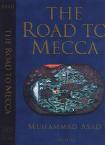
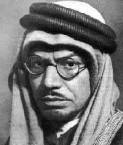 I am most pleasantly surprised that readers have so quickly figured out the mystery man in our latest ATP Quiz. Since they have, let me add a little more information and let the discussion continue.
I am most pleasantly surprised that readers have so quickly figured out the mystery man in our latest ATP Quiz. Since they have, let me add a little more information and let the discussion continue.
I am not sure, however, how many readers know of Muhammad Asad or of his connection to Pakistan. Let me confess that until fairly recently I did not; at least not of the Pakistan connection. As I have gotten to know more about this connection, I have gotten more and more intrigued - all the more so because there is relatively little in his own writings or that of others about this.
But lets start from the beginning.
Asad was born in 1900 as Leopold Weiss to Jewish parents in Lvov (then part of the Habsburg Empire, now in Ukraine). He moved to Berlin in 1920 to become a journalist and traveled to Palestine in 1922. It was there that he first came into contact with Arabs and Muslims and began a long journey into Muslim lands and minds that eventually led to his embracing Islam in 1926. His bestselling autobiography Road to Mecca (published 1954) recounts these years in vivid and captivating detail., including his adventures in Arabia and in working with King Ibn Saud and the Grand Sanusi, amongst others.
Later in his life, after retiring in Spain, he spent 17 years working on an English translation of the Quran which was first published in 1980. Many consider this to be one of the finest English translation of the Quran - some argue this is because he himself was fluent in bedouin Arabic which is closest to the Arabic in the Quran, others suggest that since he was himself a European and wrote in more understandable idiomatic English his translation is most accessible to non-Arabic speakers.
As a lay-reader who ver the years has read a number of English translations, including his, I do find Asad’s translation - The Message of the Quran - to be easier to read than those by Abdullah Yusuf Ali or Marmaduke Pickthall which are amore formal and literal translations. Unlike the translations by Prof. Ahmed Ali (my particular favorite) and by Thomas Cleary which are also in contemporary idiom and very readable, the Mohammad Asad translation has the added virtue of also having commentary and explanations, and the new edition is wonderfully presented, printed in the highest quality, and with tasteful calligraphy. All in all, Mohammad Asad’s The Message of the Quran is the translation that I now recommend to friends, Muslims as well as non-Muslims.
But I digress. Much as I like Muhammad Asad’s translation of the Quran and especially in its new printing, that is not the subject of this post. The subject of the post is his ‘Pakistani connection’ and also why we do not find much about that connection in his writings. Here is what we know.
By the early 1930s Asad had gotten rather disenchanted by King Ibn Saud and his religious advisors (see Road to Mecca) and had begun travelling Eastwards into other Muslim lands. This brought him to British India and there he met and became a good friend of Dr. Mohammad Iqbal. Indeed, Iqbal encouraged him to write his book Islam at the Crossroads (published 1934); whose cover has the following testimonial from Iqbal:
“I have no doubt that coming as it does from a highly cultured European convert to Islam, it will prove an eye-opener to our younger generation.” Muhammad Iqbal.
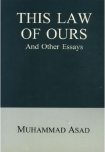
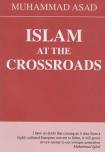
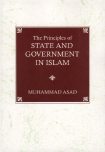

During World War II imprisoned him in a camp for enemy aliens (because of his Austrian nationality) while his father was interned by the Nazis because he was Jewish. After the War he fervently threw his all behind the demand for Pakistan. Upon the creation of Pakistan, he saw himself very much a ‘Pakistani’ as did those he worked with (reportedly even took to wearing the achkan). In 1947 he became the director of the Department of Islamic Reconstruction in West Pakistan and worked on a treatise with ideas for the Constitution of Pakistan. Many of these ideas (which were mostly related to creating a multi-party parliamentary democracy) were reproduced in his later books but he was not very successful in getting them implemented.
 In 1949 Asad joined the Pakistan Foreign Ministry as head of the Middle East Division and eventually in 1952 came to New York as Pakistan’s representative to the United Nations. Here he met the woman who would become the last of his wifes (Pola Hamida). Whether it was the fact that he married her and divorced his earlier wife or the messiness of Pakistani politics, it was in this period that he fell out with the powers in Pakistan and resigned from the Foreign Ministry. He decided to stay on in New York to write Road to Mecca, which became a major success. He never really returned to Pakistan (although, supposedly, Gen. Zia ul Haq tried to get him back) and died in Europe in 1992.
In 1949 Asad joined the Pakistan Foreign Ministry as head of the Middle East Division and eventually in 1952 came to New York as Pakistan’s representative to the United Nations. Here he met the woman who would become the last of his wifes (Pola Hamida). Whether it was the fact that he married her and divorced his earlier wife or the messiness of Pakistani politics, it was in this period that he fell out with the powers in Pakistan and resigned from the Foreign Ministry. He decided to stay on in New York to write Road to Mecca, which became a major success. He never really returned to Pakistan (although, supposedly, Gen. Zia ul Haq tried to get him back) and died in Europe in 1992.
It was his estrangement with the Pakistan government that pushed him back into writing and produced two amazing works - Road to Mecca and The Message of the Quran. However, here once again is a story of one who wished to give his all to Pakistan and we did not let him.
Eiating out
We are what we eat? Hopefully, not entirely. But certainly in part.
One of the first posts (1 July, 2006) on this blog to get a healthy reader response was about food. We asked our readers to nominate places where they thought one could get the Best Pakistani food Outside of Pakistan. Nearly two years ago now (September 24, 2006) we compiled some of the ideas our readers had given us to create our v0.01 list. It is past time now to update this list. So, here is our next iteration at a list of some of the Best Pakistani Food Outside Pakistan.
To repeat from the last post on this subject, the purpose of this post is (a) to again invite our readers, especially newer ones, to suggest good places for Pakistani food outside Pakistan (especially if you happen to be outside of USA but not in Pakistan); and (b) to consolidate the list that has evolved in the comments section of our last two post (here and here).Here, then, is our second cut at a list of restaurants (Pinglish = ‘hotels’) outside Pakistan where one might get good (sometimes, great) Pakistani food. In building this list we started from the last list and then added and embelished it based on the comments that were received on it. We start with USA and UK, from where we received the most detailed response.
United States of America (USA)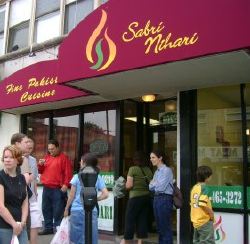 For variety as well as authenticity Devon Street (Pinglish = ‘Diwaan’) in Chicago remains the yardstick of the Pakistani food experience in North America. However, great culinary treasures are also to be found in in Dallas and in the San Francisco Bay Area. At least according to those who responded here, the New York / New Jersey belt has a lot of Pakistani food, but not the best Pakistani food to offer. Please tell us if this is wrong, and also tell us who you would add here. Many places, however, are like Boston; an occasional Pakistani eatery opens, but then disappears for lack of patrons or bad management. Here are some specific suggestions from our readers:
For variety as well as authenticity Devon Street (Pinglish = ‘Diwaan’) in Chicago remains the yardstick of the Pakistani food experience in North America. However, great culinary treasures are also to be found in in Dallas and in the San Francisco Bay Area. At least according to those who responded here, the New York / New Jersey belt has a lot of Pakistani food, but not the best Pakistani food to offer. Please tell us if this is wrong, and also tell us who you would add here. Many places, however, are like Boston; an occasional Pakistani eatery opens, but then disappears for lack of patrons or bad management. Here are some specific suggestions from our readers:
Best of the Best:
Tahoora Sweets (Chicago, IL) for mithai and meetha
Bar B Q Tonight (Carrollton, Dallas, TX) for nihari
Ravi Kabab (Washington DC) for chicken karahi
Shalimar (Edison, NJ) for chapli kebab
Ghareeb Nawaz (Devon, Chicago, IL) for chicken biryani
Highly Recommended:
Sabri Nihari (Devon, Chicago, IL) for nihari
Usmania (Devon, Chicago, IL), for paya and kabab
Lahore Grill (Devon, Chicago, IL) for chargha
Shahnawaz Restaurant (Oaktree Rd., NJ) for kabab
Al-Markaz (Richardson, Dallas, TX) for bihari kabab
Kabob King (Jackson Hieghts, New York, NY) for seekh kabab
Roti Boti (Astoria Blvd. and Jackson Hieghts, New York, NY) for desi fish
Food Factory (Washington DC), for tikka
King Sweets (Chicago, IL) for kashmiri chai
Agha’s Juice (Carrollton, Dallas, TX) for gola
Royal Sweets (Carrollton, Dallas, TX) for mithai
Royal Sweets (Devion, Chicago, IL) for peetisa
Shalimar (Bay Area, San Francisco, CA) for chicken tikka
Kebabeesh (New York, NY) for seekh kabab
Haveli (Dallas, TX) for chargha
Abshaar Restaurant (Washington, DC) for bihari kabab
Bilal Restaurant (Los Angeles, CA)
Medina Market Cafe (Brighton, Boston, MA) for tikka
Ambala Sweets (Chicago, IL) for mithai
Recommended:
Pakwan Restaurant (Hayward, CA), for bihari kababs
Haandi (Lexington Ave, New York, NY), for parathas
The Pakistani Cuisine (Manhattan, NY), for karahi
Shirin Mahal (New York, NY) for rass-malai
Shehzan Restaurant (Edison., NJ) for tikka
Mirchi Cafe (Freemont, San Francisco, CA) for desi Chinese
Kalonji (Long Island, NY) for desi Chinese
Lahore Karahi (San Francisco, CA) for karahi
Kabab Palace (Washington DC) for kabab\
Bundu Khan (Houston, TX) for kabab
Khan Kabob House (Monterey, CA) for biryani
Shahnawaz Tandori (Lakewood, Los Angeles, CA) for tandori
Kabab and Tandoor (Waltham, MA) for seekh kabob
Boston Kabab and Pizza (Alston, MA) for desi pizza
Chutney Restaurant (Northern Virginia)
United Kingdom
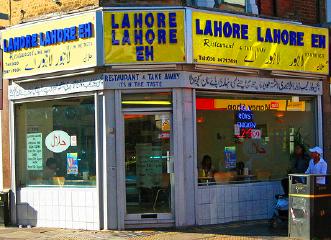 Some readers lament that there are lots of ‘desi’ restaurants in the UK, especially London, but not too many real ‘Pakistani’ ones. However, other readers point out that there is both quantity and quality to be found. In and around London, of course, you find lots and lots of Pakistani places. But as you will see from the list below, good Pakistani food is to be had all over the country. Green Street in East London is the mini-Pakistan and full of “All Things Pakistani” we are told. High Street and Hoe Street in Walthamstow in East London and Ilford Lane in Ilford in the North East also have great concentrations of Pakistani khabba. Here are some specific suggestions from our readers:
Some readers lament that there are lots of ‘desi’ restaurants in the UK, especially London, but not too many real ‘Pakistani’ ones. However, other readers point out that there is both quantity and quality to be found. In and around London, of course, you find lots and lots of Pakistani places. But as you will see from the list below, good Pakistani food is to be had all over the country. Green Street in East London is the mini-Pakistan and full of “All Things Pakistani” we are told. High Street and Hoe Street in Walthamstow in East London and Ilford Lane in Ilford in the North East also have great concentrations of Pakistani khabba. Here are some specific suggestions from our readers:
Best of the Best:
Salloo’s (Knightsbridge)
New Tayyab (Whitechapel in East London)
Lahore Kebab House (Whitechapel in East London)
Mumtaz (chain) Restaurants (Bradford)Highly Reccomended:
Khan Restaurant (Central London)
Mirch Masala (branches in Tooting and in Streatham)
Nagina Karahi (High Street, South Hall)
Roshni (South Hall)
Pink Garlick (Wilmslow Road, Manchester)
Reccomended:
Sahara Grill (Leyton, London)
Lahore Lahore eh (East Ham, East London)
Kebabish (Victoria Road, Glasgow)
Village Curry House (Tradeston, Glasgow)
Akbars (Bradford)
Al-Faisal (Birmingham)
Chowdreys Restaurant (Bradford) was reccoended by the restaurant management itself; has impressive website, we await customer reviews
We have a better coverage from the rest of the world this time around, but still nowhere near the in-depth reviews that we got from USA and the UK. I know from personal experience that there is a lot of great Pakistani food to be found in Canada, all over Europe and in the Far East. It remains a matter of surprise for me that despite having a readership in these areas we do not get more suggestions from our readers on where to eat Pakistani food in these countries. I am hoping we will get more specific suggestions in the second round.
Saudi Arabia
Not surprisingly, there are lots of Pakitani restaurants in Saudi Arabia. Some of the specific ones suggested include:
Hyatt Restaurant (Hara, Riyadh) for chicken karra massala
Shola Restaurant (Olaya, Riyadh) for nihari
Red Onion Restaurant (Olaya, Riyadh) for aachari chicken
Faran Restaurant (Hara, Riyadh) for pillao and daal
Alhamra Restaurant (Hara, Riyadh) for chicken tikka and daal
Lahori Khabay (Hara, Riyadh) for tikka
Canada
Toronto has a large Pakistani population and many Pakistani restaurants; especially in Gerrard Street (Toronto’s mini-Devon). Our readers suggest Iqbal Tikka House, Lasani, and Lahore Tikka House (which, we are told, is actually owned by a Lahori!). Eqbal Foods in Thorncliffe, downtown Toronto is also highly recommended.
Finland
A reader reports that there is only one Pakistani restaurant in the entire country, called Peshawar. The review of the food was less than complimentary.
Japan
One Pakistani restaurant in Tokyo that was recommended is Gandhara Restaurant which is an upscale place. There is also the Hunza Restaurant in Roppongi, Tokyo.
Germany
One reader reports of an excellent Pakistani restaurant called Dheeba in Munich, run by a Rawalpindi native, that is particularly recommended for its korma. Another reader suggests Mumtaz Mahal Restaurant in Heidelberg.
France
We are told that in Paris there is a whole street full of Pakistani and Indian cuisine called Rue du Faubourg Saint-Denis. However, we have not gotten any specific reviews from here yet although one reader remembers a “no-name” dhabba that served exquisite karahi. What we do have is news of two Pakistani restaurants in Lyon in south France, Le Ravi and Le Karachi, reportedly these are famous for their tandori dishes.
Ireland
One reader review found the Pakistani food at Global Foods (Davis Street, Dublin) to be “superb.” Two other Dublin restaurants that have been recommended are Khyber Tandori and Medina (the first, we are told is pricey and the second affordable).
Malaysia
We are told that in Kuala Lumpur there is a small dhaaba called Pakeeza (off Federal Highway in Petaling Jaya). “The Lahori chef there will cook things ‘desi style’ if you ask him to and will even do paaya and nehari on request in advance.”
Singapore
In Singapore, there is Saffron in Clark Quay, Usman Restaurant at Serangood Road near Mustafa Shopping Mall, and Daawat at the SIngapore Expo Center..
One should also add the disclaimer that we have ourselves not been at most of these (though we have been at some) and this list is based on reader comments (if you think the list is wrong, leave us comments and we will try to incorporate them next time).
This list is labeled version 0.10 (the last one was version 0.01) because we think we do have a better data set to build this on than last time, but it is still very much a work in progress and our level of confidence in this remains scanty because we know from personal experience that there is much more out there than is reflected in this list. Also, in some cases it is difficult to tell whether people are only reporting on what eateries there are or whether they are determining which ones are the best.
Our thanks to everyone who has sent the comments that have gone into the list. And may we request you all to please help us refine it further.
Sufi Ghulam Mustafa Tabassum.
 we’ve extensively covered Pakistani poets and poetry.
we’ve extensively covered Pakistani poets and poetry.One thing which I think has lagged so far is the Pakistani poetry for children. This post is an attempt to introduce one of most famous poets of Pakistan who has written extensively children. He is Sufi Ghulam Mustafa Tabassum.
My mother recently mailed me one of his books called ‘jhoolne’ for my son. For the past two nights I’ve been reading this book to my son at bed time and it has also taken me to a ride through memory lane, and hence the motivation to write this post.
The title poem to the right here is zcalled ‘tar tar’. Sufi Tabassum is famous for using sound effects in his poems to get children’s attention. This poem uses sound (tar tar) of old cars (motor) as
 well as sound (cham cham) of a horse cart (tam tam). In 4 simple lines Sufi Tabassum has created this melodious masterpiece for children which is ‘hum-wazan’, rhyming and easy to remember.
well as sound (cham cham) of a horse cart (tam tam). In 4 simple lines Sufi Tabassum has created this melodious masterpiece for children which is ‘hum-wazan’, rhyming and easy to remember.More than a generation has grown up reciting and remembering his poems by heart. His poems can be found in text books across Pakistan, in children’s magazines as well as in audio media. One of the most famous characters of Sufi Tabassum’s poems is a boy named ‘tot batot’ which is now a household name across Pakistan.
The poem to the left is titled as ‘anda’ (egg) and it is another of my favourites. For our English readership, I want to give an approximate translation. A hen is telling a rooster that she has laid an egg. While she commends herself on this feat of laying beautiful eggs she also complains that despite producing beautiful eggs she remains bare feet. To this dilemma the
 rooster suggests to hen to sell her eggs and buy shoes for herself. A very simple story like this, told in rhyming Urdu makes people of all ages smile and remember this poem for ever. This is what Sufi Tabassum is most famous for. He talks to children in their simple language.
rooster suggests to hen to sell her eggs and buy shoes for herself. A very simple story like this, told in rhyming Urdu makes people of all ages smile and remember this poem for ever. This is what Sufi Tabassum is most famous for. He talks to children in their simple language.Following poem is called ‘munna aur laddoo’. In very simple language it talks about a ‘laddoo’ (sweets) which has attracted attention of two young boys (munna(y)).
Sufi Ghulam Mustafa Tabassum was born is Amritsar (India) on August 4, 1899. He got his education from Church Mission High School Amritsar, Khalsa College Amritsar, FC College Lahore (B.A) and Punjab University Lahore (M.A and B.T).
He taught at Central Training College, Lahore (1927-31) and Government College, Lahore (1931-1954). He retired
from Government College as the head of Urdu and Farsi
Department.
The collection of poems shared here come from his book called ‘jhoolne‘ which was first published in 1958. In the begining of this book, dated as January 1, 1958, Sufi Tabassum mentions Patras Bukhari as one of his respected teachers and
 friends. Patras Bukhari has actually indeed written the preface of ‘jhoolne’ and towards the end of it he prays for Sufi Tabassum in following words:
friends. Patras Bukhari has actually indeed written the preface of ‘jhoolne’ and towards the end of it he prays for Sufi Tabassum in following words:dua hai ke Sufi Tabassum ka ye bachpan hamesha qaayem rahe!
Patras Bukhari’s preface is dated as written on June 5, 1946 in Delhi which means the first collection of ‘jhoolne’ must’ve appeared around that time.
The title of the 1958 edition of the book (shown to the left) is designed by Chughtai and is published by Ferozesons Limited.
Between 1954-1960, Sufi Tabassum was involved with
Khana Farhang-e-Iran at Lahore as well as with teaching Urdu to Bengali students in Civil Services Academy and Finance Services Academy.
He acted as an editor of the magazine ‘lail-o-nahar’ from 1961-1963 and then got busy ar Radio Pakistan, Lahore.
In ‘jhoolne’ Sufi Tabassum wrote this famous poem about a funny boy called ‘tot batot’. As mentioned above too, this character became an instant household name in Pakistan. 24 years after ‘tot batot’ first appeared in jhoolne, Sufi Tabassum wrote a new book with the title ‘tot batot’. On my last visit to Pakistan, I especially went to Urdu bazar to buy this book for my son. The preface is written by Sufi Tabassum in his own handwriting and it is dated to be written on September 6, 1970 at Samanabad, Lahore.
To the left is Sufi Tabassum’s another famous poem called ‘cheechoN’. It appears in many children books as well as school text books across Pakistan. Patras Bukhari has written about this poem in following words:
“When children read ‘cheechoN cheechoN chaacha, ghaRi pe chooha naacha’, they enjoy it. The elders however may say that we have
 never seen the word ‘cheechoN’ in any dictionary. And if ‘chaacha’ is meant for the word ‘chacha’ then it is not a decent way of calling an uncle. And why has a mouse danced on a clock? What lesson are we giving to children? etc etc.
never seen the word ‘cheechoN’ in any dictionary. And if ‘chaacha’ is meant for the word ‘chacha’ then it is not a decent way of calling an uncle. And why has a mouse danced on a clock? What lesson are we giving to children? etc etc.These questions are all very reasonable but they come from those people who have forgotten their own childhood. May be they come from people who have decided on not to repeat those things which had made their own childhood enjoyable. Thank God that Sufi Tabassum has been blessed by such wisdom where he can talk to children in their own words and sounds. He recognizes a child’s mind as this strange place where snakes dance on the trees, cats eat berries and tar tar, cham cham, tam tam make such a melodious mix that one cannot learn those even from ‘taan sain’ at an older age.
During the last years of his life, Sufi Ghulam Mustafa Tabassum had dedicated his life to the research on ‘Iqbaliat’ (study of Allama Mohammad Iqbal). On the occasion of 100 year celebration of Allama Iqbal, Sufi Tabassum wrote, edited and produced (tasneef) several books on Allama Iqbal. In 1978 He went to Islamabad to attend a function on Allama Iqbal, but on his return he passed away at Lahore Railway Station. The date of his sad demise was February 7, 1978.
The books that he wrote for children include:
1. jhoolne
2. suno gap shap
3. tol matol, and
4. tot batot
Wednesday, October 14, 2009
An interview with "Ali Vazirian
Dan Rule: Your work seems to have less of a Western influence or aesthetic than some of your Iranian contemporaries; it seems to have more of a distinctly Iranian flavour and feel...
Would you agree?
Ali Vazirian: I will be glad if such characteristics can be found in my works, But I must say that this Iranian taste and this kind of Aesthetic that you pointed to ,is present mainly because I live in an atmosphere of a civilization and culture that I belong to it. So it is natural that some parts of my inner world reflect in my works. In fact, I have never tried to make my works purely Iranian. This happens in the inner of the artist and relates to the way of his/her life and also his philosophical look to the world around him. Being interested in a culture is far different to live on manners and customs of that culture. political personalities can keep their thoughts hide from people, say something and do something else , but the artist cannot act this way as Basically art of every single artists would depicts his world of opinion and believes.
DR: What are your chief influences?
AV: Now there's nothing. My works takes form spontaneously and based on studies and visual experience of my former. But in the past, I affected by many things .From Iranian traditional paintings (Persian painting) with pure colors and full of masterly portrait atmospheres of Gustav Kilimet and Henri Matisse and even Georges Rouault. I cannot really talk about just a specific one. But to tell the truth, what affected me more than anything and has affected the creation of my works was part of Iranian Poem and literature that is full of allegory and scenography. An inspiring treasure which never ends.
DR: Do you draw any direct inspiration from Western graphic design?
AV:Inspiration happens at the beginning or at least in my case have been so.
DR: Do you also strive to transcend national boundaries? Would you like your work to be read and understood in an international setting?
AV:Understanding of an artist works in international level is a privilege that is consistent with the essence of art. Graphic works are not created to be confined to stay in geographical bounderies or a single room. These works created to transfer the concept that designer bear in his/her mind, for being observed, for make a connection to people, so its natural that more audiences make the artist happier.
DR: Notions of globalisation possess a dominantly Western slant and could be accused of eroding cultural differences and differences in visual language.
Should artists always be aware of their own culture and where they come from?
AV: The artist job His is awareness to his native culture and protection of it. We must not ignore the fact that the global movement in the meantime is irresistible and indivisible. Globalization is attainable by uniformity of the ways of behavior .But it needs the plurality which reflects in variety of ways: national identity, ethnic identity, religious identity. A culture with spirit of invention seems fearless of the concept of globalization.
DR: Is the idea of a universal visual language detrimental to the art of specific countries?
AV: The graphic art belongs to The public not to elites who owned private museums and galleries as their resort. So the artist needs a language to reach to a wide spectrum of people with different cultures who are able to understand and communicate with it. Accessing such a language you can show the indisputable features of your visual art without ignoring the positive dimensions of other cultures. For example, I can mention a Poster which I designed for a film festival in Italy a year ago. (Enclosed with this email).
DR: Do you see Iranian graphic design as a point of resistance?
AV: There is no resistance, I don’t know why the word is used as usually the word” resist “ being used in situations like the invasion and occupation and in the field of the world graphic I don’t believe in any invasion. Graphic designers with the showing a part of their visual culture can have a part in globalization of graphic designing. Iranian graphic design is the of Iranian culture in the global culture. Any claim as the resistance of Iranian graphic against its western counterpart is not more than just a slogan. We should not forget that one of the prerequisites of globalization is about the concept of relation, with rhizomatique identity, and to accept each other with mutual valuation. Cultural relationship is no exception.
DR: What do you feel makes Iranian graphic design unique?
AV: Every single one of Iranian designers is presenting some specific sight of Iranian visual culture in their works, but specifically using traditional reliefs and Persian letters distinguishes Iranian cultures from others.
DR: Calligraphy and typography seem to hold much more of a significance to Iranian design than their Latin counterparts in the West...
Would you agree?
AV: I absolutely agree.
DR: Tell me about the significance of calligraphy and typography. They seem to play a prevalent role in your work....
AV: Basically, Iranian culture roots in religion which the miracle of his prophet, “Quran”, is a divine book. It means God speaks to their servants by words. Therefore writing its words and letters, especially calligraphy, find a special place in Iranian culture. Using Farsi letters and calligraphy rooted back before the revolution in 1979, but the Iranian artists’ inclination toward it has been increased. Anyhow I reject your emphasis that my works are dominated by calligraphy. This is only the characteristic of some of my works. Although I believe that using words and writing words give an indigenous identity toward the works, it may cause an ambiguity for an audience who doesn’t know the Farsi language, and cannot understand their meaning. And it is opposite of the identity of graphics. So because of this I believe that using of visual elements in graphic works is far more important.
DR: What effect do you feel the Islamic revolution of 1979 had on Iranian visual culture?
AV: The effect of Iranian revolution was rather in content than form just like what happened in cinema, but in the field of graphics, it made the artists focused more in their own roots of visual culture which is specifically distinguished from other Islamic nations.
DR: Do you feel that creating art in autocratic political situations has influenced your work in a particular way?
AV: I consider the field of culture premier to caduceus politics and acrobats politicians and always tried to keep the distance. Thus it cannot shadow my works.
DR:Tell me about your earliest influences to become an artist...
AV: In fact, I Haven’t gone after the art, whole my life the art have been my companion.
DR: What inspires you today?
AV: It is a while I am in the least work in graphic design and painting, because I have to spend a plenty of time on Filmmaking and literature and novel calls me more than ever.
DR: What should good graphic design do at a fundamental level?
AV: Seeking for an independent visual language to establish communication and transfer the messages without any need to use language .Plenty of visual studies on distinct international graphic works, reading poetry and novels, listening to music and….
As everyone knows, graphic designers are the reason there are so many wars in this world. They get inside our heads with their subliminal advertising, force us against our will to spend money on the worst pieces of shit, and eventually, drive us to depression and random acts of violence. And of course, most of them arecommunists.
So to do my part to save the world from them, i made a list of things you can do when working with a graphic designer, to assure that they have a burn-out and leave this business FOREVER.
1-Microsoft Office
When you have to send a graphic designer a document, make sure it’s made with a program from Microsoft Office. PC version if possible. If you have to send pictures, you’ll have more success in driving them mad if, instead of just sending a jpeg or a raw camera file, you embed the pictures inside a Microsoft Office document like Word or Powerpoint. Don’t forget to lower the resolution to 72 dpi so that they’ll have to contact you again for a higher quality version. When you send them the ‘higher’ version, make sure the size is at least 50% smaller. And if you’re using email to send the pictures, forget the attatchment once in a while.
2-Fonts
If the graphic designer chooses Helvetica for a font, ask for Arial. If he chooses Arial, ask for Comic Sans. If he chooses Comic Sans, he’s already half-insane, so your job’s half done.
3-More is better
Let’s say you want a newsletter designed. Graphic designers will always try to leave white space everywhere. Large margins, the leading and kerning of text, etc. They will tell you that they do this because it’s easier to read, and leads to a more clean, professional look. But do not believe those lies. The reason they do this is to make the document bigger, with more pages, so that it costs you more at the print shop. Why do they do it? Because graphic designers hate you. They also eat babies. Uncooked, raw baby meat.
So make sure you ask them to put smaller margins and really, really small text. Many different fonts are also suggested (bonus if you ask for Comic Sans, Arial or Sand). Ask for clipart. Ask for many pictures (if you don’t know how to send them, refer to #1). They will try to argument, and defend their choices but don’t worry, in the end the client is always right and they will bow to your many requests.
4-Logos
If you have to send a graphic designer a logo for a particular project, let’s say of a sponsor or partner, be sure to have it really really small and in a low-res gif or jpeg format. Again, bonus points if you insert it in a Word document before sending it. Now you might think that would be enough but if you really want to be successful in lowering the mental stability of a graphic designer, do your best to send a version of the logo over a hard to cut-out background. Black or white backgrounds should be avoided, as they are easy to cut-out with the darken or lighten layer style in photoshop. Once the graphic designer is done working on that bitmap logo, tell him you need it to be bigger.
If you need a custom made logo, make your own sketches on a napkin. Or better yet, make your 9 year old kid draw it. Your sketch shouldn’t take more than 5 minutes to make. You don’t want to make something that’s detailed and easy to understand, because the less the designer understands what you want, the more you can make him change things afterwards. Never accept the first logo. Never accept the 9th, make him do many changes, colors, fonts & clip art. Ask him to add a picture in the logo. Bevels. Gradients. Comic Sans. And when he’s at his 10th attempt, tell him that you like the 2nd one the most. I know, it’s mean but remember: graphic designers are the cause of breast cancer among middle aged women.
5-Chosing your words
When describing what you want in a design, make sure to use terms that don’t really mean anything. Terms like ‘jazz it up a bit’ or ‘can you make it more webbish?’. ‘I would like the design to be beautiful’ or ‘I prefer nice graphics, graphics that, you know, when you look at them you go: Those are nice graphics.’ are other options. Don’t feel bad about it, you’ve got the right. In fact, it’s your duty because we all know that on fullmoons, graphic designers shapeshift into werewolves.
6-Colors
The best way for you to pick colors (because you don’t want to let the graphic designer choose) is to write random colors on pieces of paper, put them in a hat and choose. The graphic designer will suggest to stay with 2-3 main colors at the most, but no. Choose as many as you like, and make sure to do the hat thing in front of him. While doing it, sing a very annoying song.
7-Deadlines
When it’s your turn to approve the design, take your time. There is no rush. Take two days. Take six. Just as long as when the deadline of the project approaches, you get back to the designer with more corrections and changes that he has time to make. After all, graphic designers are responsible for the 911 attacks.
8-Finish him
After you’ve applied this list on your victim, it is part of human nature (although some would argue weather they’re human or not) to get a bit insecure. As he realises that he just can’t satisfy your needs, the graphic designer will most likely abandon all hopes of winning an argument and will just do whatever you tell him to do, without question. You want that in purple? Purple it is. Six different fonts? Sure!
You would think that at this point you have won, but don’t forget the goal of this: he has to quit this business. So be ready for the final blow: When making final decisions on colors, shapes, fonts, etc, tell him that you are disappointed by his lack of initiative. Tell him that after all, he is the designer and that he should be the one to put his expertise and talent at work, not you. That you were expecting more output and advices about design from him.
Tell him you’ve had enough with his lack of creativity and that you would rather do your own layouts on Publisher instead of paying for his services. And there you go. You should have graphic designer all tucked into a straight jacket in no time!



